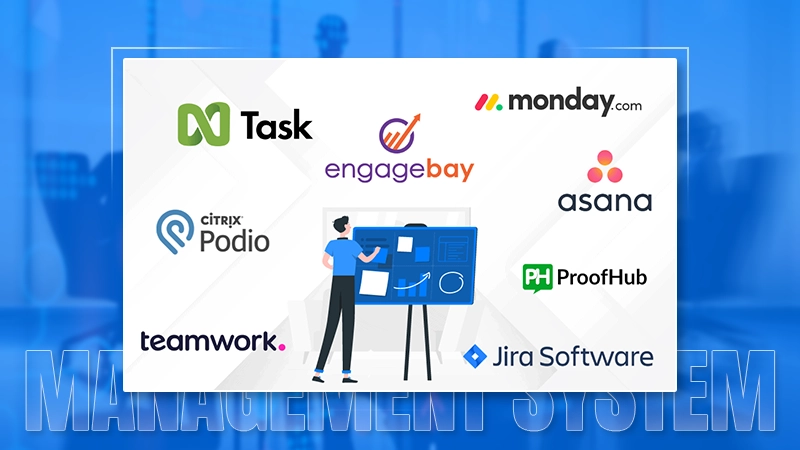Jira Resource Planning is critical to project management because it ensures that projects get the resources, they need to complete them. Jira focuses on advanced project management and planning crucially but requires to provide visualization of effective resource utilization and insight into resource availability. Most users need a capacity planner to organize the work process effectively. Try activitytimeline Jira for effective resource planning.
The Phenomenon of Resource Capacity Planning
ActivityTimeline is a powerful Jira plugin for resource management and capacity planning that can also track time and provide simple timeline reports. With resource planning software, Jira is much easier; you can see who did what and when. ActivityTimeline plugin features include resource management, team scheduling, project management, and more. Resource capacity planning is a complex but essential process that combines capacity planning with availability planning. Resource capacity planning determines the time available to perform work, whether your organization has the necessary resources, and configures them most efficiently. With the help of ActivityTimeline, you will get an idea of the overall capacity of your team, how much time you can devote to work without being overwhelmed, and plan the processes of completing tasks. You can set work priorities to complete all tasks efficiently and on time. Jira focuses on the project planning and management process. Two critical components of the capacity planning process are workload, availability, and expected utilization. ActivityTimeline provides practical ways for you to track team capacity easily, monitor your team’s performance, and watch the workload of individual team members with complete transparency. When all the data is in one continuous dashboard, it is much easier to see all the essential information to use all the available resources efficiently.
Plan Rationally Available Team Resources with ActivityTimeline
People cannot estimate the potential of a business organization; ActivityTimeline offers many advantages, such as visualization of the potential and resources of the team and projects for productive activities. To control capacity in Jira, you can also create classic teams, import existing teams, or design project teams based on information about the people working on a particular project. After the setup, you can prioritize tasks or projects, select from a list of upcoming tasks, and schedule current tasks. The ActivityTimeline indicator shows the user’s workload; you can see how many resources are used at any given time. For project managers, this saves a lot of time. You can switch between different workload modes to understand your data from different perspectives. Track resource capacity at the individual and team levels with the ActivityTimeline team dashboard, as each team has a separate workload indicator. Tasks can be assigned to individual users or entire groups. ActivityTimeline automatically updates indicators. There are many reports to conveniently track resource usage data to monitor actual/future resource usage of task processes. You can view detailed information about each team member with capacity planning reports. With ActivityTimeline, resource planning, and monitoring features, you can get a complete picture of resource availability and make informed decisions about whether resources can be integrated into other projects.
What is Workflow Planning?
This is the process that should be the foundation of your business. Workflow planning aligns the stages of various tasks with the organization’s changing needs. This is a company’s process to analyze its workforce and determine the steps needed to prepare for future needs. But what does this mean in practice? Simply put, workforce planning is about hiring the correct number of people with the right skills to deliver the best results, meeting the company’s short-term and long-term goals. Sustainable planning of labor resources should also have a long-term view of the organization’s immediate needs, contributing to the adoption of rational business decisions. Personal planning can be a simple process. ActivityTimeline focuses analytics on various challenges to help organizations achieve their long-term business goals and prepare to manage industry or organizational volatility. More specifically, this process should enable the HR team to identify needs concerning the organization’s future goals and balance the supply and demand of skills and workforce. Strategies need to be developed to ensure the right people, technology, and balance of employment patterns are in place so that the organization can achieve its long-term goals to meet the future needs of the business. Develop and implement strategies to bridge the gap between the future and the present. Workforce planning can also save a lot of money because strategic planning helps determine the most effective ways to engage different employees to accomplish tasks.
Why is Task Planning Necessary?
Many companies implement a performance planning process to focus on more comprehensive staff planning to achieve their goals as efficiently as possible. This process helps identify unrealistic workplace goals and barriers to high performance and can provide solutions to help reduce incoming risks. Focus and address inefficiencies. They have lowered labor costs. Identify and respond to changing business and customer needs. Identify development opportunities for your organization’s employees. This promotes higher productivity and improves employee workload balance. Planning helps future success. This ensures long-term business goals are achieved and better shapes the employee experience. A key issue in creating a plan for the execution of tasks by the company’s personnel is understanding the relevant business goals. HR must understand the goals and invest in projects to achieve them. The workforce planning phase involves hiring people with the right skills at the right place, time, and price. One of workforce planning goals is to ensure that business goals are achievable. The workforce planning process requires the right people to assess short-term and long-term business goals. The next step after determining your goals is to analyze your current workforce. Therefore, it is necessary to decide on the quality and quantity of the force. A skills gap analysis provides valuable information for your company. Armed with this knowledge, you can create staff assignments based on opportunities.
Anticipating future problems is critical to workforce planning, and identifying them can save valuable time in developing steps to address them. Create an action plan. Once your project is complete, you can put it into action. All necessary resources are available, new or expanded tasks are understood, and business and employee needs are met. It prepares everyone to participate and play their part. The task execution plan must constantly be consistently checked and controlled. As a result, your workforce planning strategy can change as your business grows. Identifying new areas allows for progress and improvement, allowing the necessary adjustments to be made to meet future challenges.







